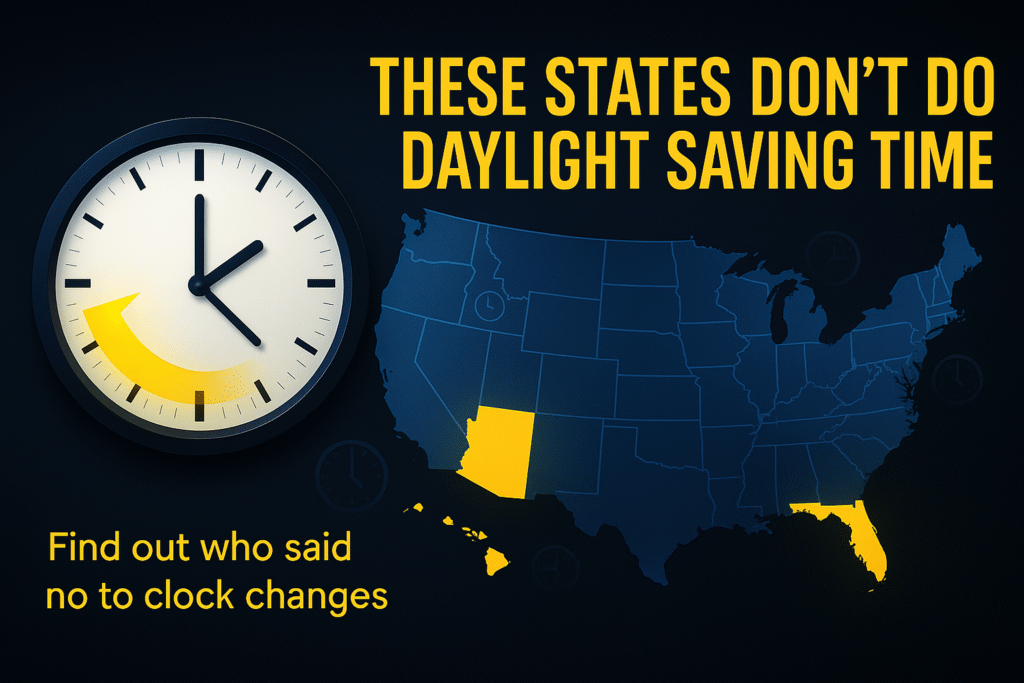Daylight Saving Time has officially ended for 2025. Early Sunday morning, the clocks turned back, giving us an extra hour to enjoy. Here’s what you should know about this seasonal time change.

When do Americans “fall back” in 2025?
The clocks went back an hour on Sunday, November 2, 2025, officially ending Daylight Saving Time. It first kicked off last spring on March 9, giving us those longer sunny evenings. Don’t worry — the extra daylight will be back when Daylight Saving Time returns on March 8, 2026, so get ready to “spring forward” again!
Gain an Hour or Lose One? What Daylight Saving Time Really Does to Your Clock — and Your Sleep
Thanks to the clock rollback on Sunday, everyone got an extra hour of sleep! For most Americans, that means a little more rest to enjoy. While many digital clocks update automatically overnight, don’t forget to reset the ones that need to be changed manually. You’ll notice evenings getting darker earlier now—and the sun will be rising a bit sooner in the morning.
Why Do We Still Change the Clocks? The Odd Origin of Daylight Saving Time ⏰”
“It Started as an Energy Hack — Here’s the Real Story of Daylight Saving Time.”
The yearly clock change has been around for decades, but its origins are still a bit of a mystery. Some say it started because farmers wanted more daylight, while others credit early risers who liked making better use of morning light. But honestly, not all these theories hold up. Germany was the first to officially adopt Daylight Saving Time in 1916, during World War I, hoping it would help save energy. Over the next few years, other European countries and the U.S. followed. There’s been plenty of debate about it since then, but according to the Bureau of Transportation Statistics, the U.S. finally made Daylight Saving Time a legal standard through the Uniform Time Act of 1966.
No More Time Change Drama: The States That Ditched Daylight Saving Time for Good.
“These U.S. States Don’t Touch Their Clocks — And They’re Loving It.”
Most parts of the United States just turned their clocks back, but did you know there are a few places that don’t follow Daylight Saving Time at all?
That’s right — two U.S. states and several territories skip the clock change completely.
According to the Department of Transportation, which oversees the nation’s time zones, Hawaii and most of Arizona (except the Navajo Nation) don’t adjust their clocks. The same goes for American Samoa, Guam, the Northern Mariana Islands, Puerto Rico, and the U.S. Virgin Islands — no time change there either.
Interestingly, states are allowed to opt out of Daylight Saving Time, but they can’t choose to stay on it permanently. In other words, they can stop changing the clock, but they can’t decide to “stay on summer time” all year long.
According to the Pew Research Center, most countries around the world don’t observe Daylight Saving Time — meaning the U.S. and much of Europe are actually the exceptions, not the rule.
And as timeanddate.com notes, most of the countries that do change their clocks pushed them back one hour in October, signaling the official return of shorter days and earlier sunsets.
The Great Time War: Why the U.S. Still Fights Over Daylight Saving
Back in 2022, a CBS News/YouGov survey showed that almost 80% of Americans wanted some kind of change in how the country handles time. Most people preferred sticking with Daylight Saving Time instead of Standard Time.
That same year, the Senate passed something called the Sunshine Protection Act, which would have made Daylight Saving Time permanent. But it never went anywhere in the House of Representatives.
Before starting his second term, President Trump mentioned that he planned to end the whole practice of changing the clocks twice a year. He even wrote on Truth Social last December that Daylight Saving Time was inconvenient and expensive for the country, saying that the Republican Party would push to get rid of it.
Interestingly, while he once called for ending Daylight Saving Time, Trump has also talked before about keeping it permanent—basically, keeping the clocks set one hour ahead all year.
Several studies have found that switching the clocks back and forth can mess with people’s health. Researchers at Stanford Medicine said this year that these time shifts don’t just affect mood and mental health, but also increase the risk of heart attacks, obesity, and strokes.
